Alocasia Cuprea: Everything You Need to Know About This Rare Beauty
The Allure of the Mirror Plant
Have you ever gazed upon a houseplant so mesmerizing that it stopped you? The first time I encountered an Alocasia Cuprea, I stood transfixed by its otherworldly beauty—metallic leaves gleaming under soft light, creating an almost mirror-like reflection that seemed to capture the essence of luxury in plant form.
For plant enthusiasts seeking something truly special, the journey into rare houseplants often leads to this crown jewel of the Araceae family. There’s something undeniably magnetic about those rigid, copper-toned leaves with their pronounced veining—nature’s interpretation of stained glass artwork.
Whether you’re expanding an extensive collection or drawn to the extraordinary, this magnificent copper-leafed beauty from the rainforests of Borneo offers something few other indoor plants can—a living, breathing piece of botanical artistry that transforms any space it inhabits.
Beyond its striking appearance lies a fascinating story of adaptation, rarity, and the delicate balance between challenge and reward that characterizes many prized houseplants. Join me as we explore everything worth knowing about nurturing this tropical treasure in your home environment.
Table of Contents
Table of Contents
What Is Alocasia Cuprea? Meeting the Metallic Masterpiece



Before diving into care specifics, let’s acquaint ourselves with this remarkable plant and understand what makes it so coveted among collectors and plant enthusiasts worldwide.
Origins and Natural Habitat
Nestled within the lush, humid rainforests of Southeast Asia, particularly the island of Borneo and peninsular Malaysia, Alocasia Cuprea evolved in a specific ecological niche that shaped its distinctive characteristics. In its natural setting, this understory plant thrives beneath the protective canopy of taller vegetation, receiving dappled sunlight filtered through layers of foliage above.
This native environment explains much about the plant’s preferences when brought into our homes. The consistent warmth, high humidity, and indirect light of its tropical habitat have programmed certain needs into its botanical DNA—understanding these natural conditions provides valuable insights for successful cultivation.
As a member of the Araceae family (commonly known as aroids), Alocasia Cuprea shares characteristics with other popular houseplants like Monstera, Philodendron, and Anthurium species. However, even within this diverse family known for spectacular foliage, the Mirror Plant stands apart with its uniquely metallic appearance.
Distinctive Features of the Mirror Plant
What precisely makes Alocasia Cuprea so distinctive among houseplants? Several key characteristics contribute to its status as a collector’s item:
- Metallic Foliage: The most striking feature is undoubtedly those thick, rigid leaves with their remarkable copper-red coloration and metallic sheen. This reflective quality results from a specialized cell structure that uniquely interacts with light.
- Dramatic Venation: Prominently raised veins create an almost architectural pattern across each leaf, resembling intricate stained glass windows. This variation not only adds visual interest but also serves functional purposes for the plant in its natural habitat.
- Compact Growth Habit: Unlike some of its larger Alocasia cousins that can reach impressive heights, Cuprea maintains a more manageable size in cultivation, typically reaching 1-2 feet tall indoors. This compact nature makes it suitable for various display options.
- Rhizomatous Growth: The plant grows from a rhizome (underground stem) rather than a traditional root system, which influences both its care requirements and propagation methods.
Table: Alocasia Cuprea at a Glance
Feature | Description |
|---|---|
Scientific Name | Alocasia Cuprea |
Common Names | Mirror Plant, Jewel Alocasia, Red Secret Alocasia |
Family | Araceae |
Native Region | Borneo, Malaysia |
Leaf Color | Metallic red-copper |
Mature Size | 1-2 feet (indoor) |
Growth Rate | Moderate |
USDA Hardiness | Zones 9-11 |
Difficulty Level | Intermediate to Advanced |
Why Alocasia Cuprea Deserves a Place in Your Collection
Beyond its obvious visual appeal, several factors make this particular plant worth the effort required to maintain it properly. Understanding these benefits helps justify the investment of time, space, and resources into acquiring and caring for this special specimen.
Rarity and Collector’s Value
While tissue culture has increased availability somewhat in recent years, Alocasia Cuprea remains relatively scarce in the mainstream houseplant market. Several factors contribute to this continued rarity:
The plant’s specific growing requirements make mass production challenging compared to more adaptable houseplant varieties. Additionally, its naturally slower growth rate means fewer specimens become available through traditional propagation methods.
For collectors, this relative scarcity translates to both prestige and potential investment value. Well-maintained specimens often retain or increase their worth over time, particularly those with exceptional coloration or larger mature size.
Within the specialized world of jewel Alocasias, Cuprea stands out even among its rare counterparts. While related species like Alocasia Maharani (Grey Dragon) and Alocasia Reginula (Black Velvet) offer their distinctive charm, many collectors consider Cuprea the quintessential jewel Alocasia, thanks to its unmatched metallic quality.
Design Impact and Aesthetic Appeal
Beyond collector value, the visual impact of introducing Alocasia Cuprea into your living space cannot be overstated. Those reflective, copper-toned leaves create an immediate focal point that elevates the surrounding décor.
The plant pairs beautifully with various design aesthetics, from minimalist modern spaces where its sculptural qualities shine, to more eclectic environments where it adds a touch of exotic luxury. Its metallic coloration complements both warm and cool color schemes, proving remarkably versatile despite its distinctive appearance.
For maximum visual effect, consider these placement suggestions:
- Position near (but not directly in) a window where changing light throughout the day creates dynamic reflections off the leaves
- Display against a dark wall to accentuate the metallic highlights
- Pair with plants featuring contrasting textures and colors, such as velvety dark-leaved varieties or feathery ferns
- Elevate on a plant stand to create a specimen display that draws the eye
Mastering Alocasia Cuprea Care: A Complete Guide
Now that you understand what makes this plant special, let’s explore how to keep it thriving. While Alocasia Cuprea has earned a reputation for being somewhat challenging, understanding its specific needs removes much of the mystery surrounding its care.
Light Requirements for Optimal Growth
Finding the perfect light balance represents one of the most critical aspects of successful Alocasia Cuprea cultivation. These plants evolved in understory conditions, receiving filtered sunlight through canopy layers above.
In your home, bright indirect light provides the ideal scenario. Eastern or northern exposures often work well, as do slightly shaded positions near west-facing windows. The key is avoiding both extremes—too little light prevents proper development of that characteristic metallic sheen, while direct sunlight risks scorching those precious leaves.
Watch for these indicators that your light conditions need adjustment:
- Too much light: Fading leaf color, bleached spots, or curling leaf edges
- Too little light: Diminished metallic sheen, smaller leaf size, or stretched growth reaching toward light sources
Seasonal adjustments prove necessary in many climates. During winter months when light intensity decreases naturally, consider relocating your plant closer to windows or supplementing with grow lights. Conversely, summer might require adding sheer curtains or moving the plant slightly away from particularly bright southern exposures.
For those lacking naturally bright spaces, full-spectrum grow lights offer an excellent solution. Position LED grow lights 12-18 inches above the plant, providing 10-12 hours of supplemental lighting daily during the growing season.
Temperature and Humidity Needs
As tropical natives, Alocasia Cuprea plants thrive in warm, humid conditions that mirror their rainforest origins. Maintaining appropriate environmental conditions prevents many common problems before they start.
The ideal temperature range spans between 65-85°F (18-29°C), with these plants showing noticeable stress when temperatures drop below 60°F (15°C). Avoid placing your Mirror Plant near drafty windows, air conditioning vents, or heating elements that create temperature fluctuations.
Perhaps even more critical than temperature is the humidity level. While most homes maintain humidity far below the 60-80% these plants prefer naturally, several strategies can create microenvironments with higher moisture levels:
- Pebble trays: Place the pot on a tray filled with water and pebbles, ensuring the pot bottom remains above water level
- Humidifiers: A room humidifier positioned near your plant provides consistent moisture without manual intervention
- Grouping plants: Clustering multiple plants together creates a naturally more humid microclimate through combined transpiration
- Terrarium growing: For smaller specimens, enclosed or semi-enclosed environments maintain higher humidity levels
During winter months when indoor heating significantly reduces ambient humidity, you may need to combine multiple approaches to maintain appropriate moisture levels.
Soil and Potting Requirements
Creating the perfect growing medium addresses several crucial needs simultaneously: aeration, drainage, moisture retention, and stability. For Alocasia Cuprea, standard potting soil simply won’t suffice.
The ideal substrate mimics the plant’s natural forest floor habitat, rich in organic matter yet supremely well-draining. Construct your perfect mix by combining:
- 40% high-quality potting soil (preferably peat-based)
- 30% orchid bark or chunky coconut coir
- 15% perlite or pumice
- 15% horticultural charcoal
This combination provides the aeration Alocasia roots require while still retaining sufficient moisture between waterings. The charcoal component helps prevent soil souring and maintains freshness.
When selecting a container, prioritize drainage above all else. Whatever pot you choose should have ample drainage holes. Clay or terracotta pots offer additional benefits through their porous nature, helping prevent overwatering by allowing excess moisture to evaporate through the container walls.
Size matters significantly when potting Alocasia Cuprea. These plants generally prefer being slightly root-bound rather than swimming in excess soil. Choose containers just 1-2 inches larger than the root ball when repotting, typically every 18-24 months or when roots become visible through drainage holes.
Watering Your Mirror Plant
Perhaps no aspect of care causes more confusion than proper watering. Finding the sweet spot between too dry and too wet challenges many growers, particularly with moisture-sensitive plants like Alocasia Cuprea.
Rather than adhering to rigid schedules, develop a responsive approach based on monitoring the growing medium. Allow the top 1-2 inches of soil to dry out between waterings, then thoroughly saturate until water flows from drainage holes. This mimics the natural rainfall patterns of the plant’s native environment—occasional deep soaking rather than constant moisture.
Water quality significantly impacts these sensitive plants. If possible, use filtered water, rainwater, or allow tap water to sit overnight before using, allowing chlorine and other chemicals to dissipate. Room temperature water prevents shock to the root system.
Seasonal adjustments prove crucial for preventing both overwatering and underwatering:
Table: Watering Schedule by Season
Season | Frequency | Amount | Notes |
|---|---|---|---|
Spring | Every 5-7 days | Moderate | Check soil moisture before watering |
Summer | Every 4-6 days | Moderate to high | Increase with temperature and growth |
Fall | Every 7-10 days | Moderate | Reduce as growth slows |
Winter | Every 10-14 days | Low | Minimal watering during dormancy |
Watch for these telling signs that your watering approach needs adjustment:
- Overwatering symptoms: Yellowing leaves (particularly older ones), soft or mushy stems, fungus gnats, or foul soil odor
- Underwatering symptoms: Curling leaves, crispy brown edges, or leaves that appear deflated or limp
Fertilization Strategy
Providing appropriate nutrients supports vibrant growth and maximizes that stunning metallic coloration. During active growing seasons (spring through early fall), feed your Alocasia Cuprea regularly with a balanced, water-soluble fertilizer diluted to half the recommended strength.
For optimal results, seek fertilizers specifically formulated for foliage plants or aroids. These typically provide the nitrogen necessary for lush leaf development while maintaining appropriate levels of other essential nutrients. Organic options like diluted fish emulsion or seaweed extract offer excellent alternatives for those preferring natural approaches.
Apply fertilizer every 4-6 weeks during active growth, then reduce or eliminate feeding during winter dormancy when the plant’s metabolic processes naturally slow. Resuming fertilization too early in spring risks mineral buildup in the soil before the plant can effectively utilize nutrients.
ALOCASIA CUPREA – Plant Spotlight & Care Tips
Propagation Methods for Alocasia Cuprea
Multiplying your prized specimen allows you to expand your collection or share this remarkable plant with fellow enthusiasts. While slower-growing than some houseplants, Alocasia Cuprea offers reliable propagation possibilities through rhizome division.
Rhizome Division: Step-by-Step Guide
The most reliable method for home propagation involves carefully separating the rhizomatous growth. For best results, follow this process:
- Wait for the right moment: Only divide plants showing signs of maturity, typically when multiple stems emerge from the soil line. Spring provides the optimal timing, as actively growing plants recover more quickly from division stress.
- Gather necessary tools: You’ll need clean, sharp pruning shears or a knife, fresh potting mix prepared as described earlier, appropriate pots, and optional rooting hormone.
- Prepare the plant: Water thoroughly 24 hours before division to reduce stress. Gently remove the entire plant from its container, brushing away excess soil to expose the rhizome structure.
- Divide carefully: Identify natural division points where the rhizome shows separate growth sections. Using your sterilized cutting tool, make clean cuts, ensuring each division contains both roots and at least one growth point or stem.
- Apply rooting hormone: While optional, dusting cut surfaces with rooting hormone powder encourages faster establishment and reduces the risk of infection.
- Pot divisions: Plant each division in appropriately sized containers using fresh potting mix. Position the growing points at the same depth they were maintained in the original pot.
- Provide aftercare: Place newly potted divisions in bright indirect light with slightly higher humidity than normal. Avoid fertilizing for at least a month while new root systems establish.
Tissue Culture and Availability
Commercial propagation increasingly relies on tissue culture (micropropagation) techniques, which explains the growing, though still limited, availability of Alocasia Cuprea in mainstream markets.
This laboratory process involves reproducing plants from small tissue samples in sterile environments, allowing for faster multiplication than traditional methods. While beneficial for expanding availability, tissue-cultured plants sometimes require additional acclimation time when transitioning to home environments.
When purchasing, specimens grown from division typically command higher prices but often demonstrate greater initial stability than their tissue-cultured counterparts. However, well-acclimated tissue culture plants ultimately perform equally well once established.
Troubleshooting Common Alocasia Cuprea Problems
Even experienced plant enthusiasts occasionally encounter challenges with these somewhat finicky beauties. Recognizing problems early and responding appropriately prevents minor issues from becoming catastrophic.
Pest Management
Several common pests specifically target Alocasia species, with their succulent stems and leaves offering attractive food sources. Regular inspection helps catch infestations before they establish.
Spider mites pose perhaps the greatest threat, often appearing during winter months when indoor heating reduces humidity. These microscopic arachnids cause stippling or tiny dots on leaf surfaces, eventually creating a fine webbing between leaves and stems. Treatment involves increasing humidity, applying insecticidal soap or neem oil solution, and potentially isolating affected plants.
Mealybugs appear as white, cottony masses typically found where leaves meet stems or along leaf undersides. Remove visible colonies with alcohol-soaked cotton swabs before applying insecticidal soap or neem oil to affected areas.
Scale insects create hard, circular bumps along stems and leaf veins, slowly draining plant vitality. Manual removal with a soft toothbrush followed by neem oil application provides effective control for minor infestations.
Preventative measures significantly reduce pest problems:
- Regularly inspect new plants before introducing them to your collection
- Maintain appropriate humidity levels, particularly during winter
- Clean leaves monthly with a gentle shower or a damp cloth
- Ensure proper air circulation around plants
Disease Prevention and Treatment
Fungal and bacterial issues primarily affect Alocasia Cuprea when environmental conditions favor pathogen development. Proper cultural practices prevent most problems before they begin.
Root rot represents the most common and serious disease issue, typically resulting from overwatering or poorly draining soil. Symptoms include yellowing leaves, wilting despite moist soil, and a foul odor from the root zone. Treatment requires removing the plant, trimming away all affected roots, applying fungicide, and repotting in fresh soil. Severe cases may necessitate propagating healthy sections to save the plant.
Leaf spot diseases appear as dark, water-soaked areas on foliage, eventually expanding and potentially causing leaf drop. Improving air circulation, avoiding overhead watering, and applying appropriate fungicides control most outbreaks. Always remove and destroy severely affected leaves to prevent the spread.
Addressing Common Growth Issues
Beyond pests and diseases, several cultivation-related problems commonly affect Alocasia Cuprea specimens:
Table: Troubleshooting Guide
Provide a stable environment, expect some dormancy in winter | Possible Causes | Solutions |
|---|---|---|
Yellowing leaves | Overwatering, nutrient deficiency | Adjust watering schedule, check soil drainage, supplement with appropriate fertilizer |
Brown leaf edges | Low humidity, mineral buildup | Increase humidity, use filtered water |
Drooping leaves | Underwatering, temperature stress | Check soil moisture, maintain consistent temperature |
Leaf loss | Acclimation stress, seasonal changes | Adjust light conditions, and gently clean leaves monthly |
Dull foliage | Insufficient light, dust buildup | Adjust light conditions, gently clean leaves monthly |
Styling and Displaying Your Alocasia Cuprea
After mastering care fundamentals, elevating your presentation showcases this remarkable plant to its fullest potential. Thoughtful styling transforms a well-grown specimen into a genuine design statement.
Design Ideas for Showcasing Your Mirror Plant
The container you select significantly impacts the overall visual effect. While functionality (drainage, size, material) remains paramount, aesthetic considerations deserve attention as well. Consider these stylish yet practical options:
- Matte black or charcoal ceramic planters that contrast dramatically with the metallic foliage
- Hammered copper or brass containers that complement the leaf coloration
- Natural materials like stone or wood that reference the plant’s forest origins
- Textured ceramics featuring subtle patterns that don’t compete with the foliage
Location choice dramatically affects both plant health and visual impact. Ideal display positions include:
- Eye-level placement on plant stands or shelving, where detailed leaf patterns remain visible
- Coffee tables or side tables where changing light throughout the day creates dynamic reflections
- Bathroom locations (with appropriate light,) where naturally higher humidity benefits the plant
- Within curated plant grouping,s where contrasting textures create visual interest
Consider these effective companion plants that complement rather than compete with your Alocasia Cuprea:
- Silver-patterned Scindapsus pictus varieties
- Dark-leaved Anthurium crystallinum or clarinervium
- Trailing Philodendron micans with its velvety purple-tinged foliage
- Architectural Calathea orbifolia with its bold striping
Photography Tips for Capturing Its Beauty
For plant enthusiasts sharing their collections on social media or documenting growth progress, capturing the metallic quality of Alocasia Cuprea presents unique challenges. These specialized techniques yield superior results:
- Photograph during “golden hour” (early morning or late afternoon) when soft, warm light accentuates the copper tones
- Position light sources at 45-degree angles to highlight venation without creating excessive glare
- Experiment with black backgrounds to dramatically showcase the metallic qualities
- Use macro settings to capture intricate venation patterns in stunning detail
Where to Find Alocasia Cuprea
Despite increasing popularity, sourcing high-quality specimens requires strategy and patience. Knowing where to look—and what to look for—improves your chances of finding exceptional plants.
Reputable Sources
Several specialized retailers offer Alocasia Cuprea with varying degrees of availability:
- Specialty houseplant nurseries with aroid-focused collections typically provide the highest quality specimens, often propagated in-house rather than mass-produced
- Online rare plant retailers frequently stock Cuprea, though availability fluctuates seasonally
- Botanical gardens occasionally offer specimens during special plant sales or member events
- Plant swaps and collector communities provide opportunities to acquire plants directly from experienced growers
What to Look for When Purchasing
When evaluating potential purchases, assess these key quality indicators:
- Leaf condition should show no brown edges, holes, or significant imperfections
- Growth pattern ideally features multiple leaves emerging from a central point
- Pot size should appear appropriate for the plant, neither excessively large nor root-bound
- Root health can be assessed by gently examining the drainage holes for white, firm roots
- Pest absence confirmed by carefully inspecting leaf undersides and stem junctions
Questions worth asking sellers include propagation method, age of the specimen, and specific care they’ve provided. Transparent sellers willingly share this information, helping you continue appropriate care at home.
Price expectations vary significantly based on size, quality, and market conditions. While young specimens have become more affordable through increased tissue culture production, exceptionally well-grown mature plants continue commanding premium prices, reflecting their slow growth and collector demand.
Conclusion
The journey with Alocasia Cuprea is one of both challenge and reward. As you nurture this remarkable plant, you’ll gain not only a stunning piece of living art but also the satisfaction of successfully caring for one of nature’s most captivating creations.
The metallic mirror plant may require some extra attention, but the breathtaking display of those copper leaves reflecting light throughout your space makes every effort worthwhile. Whether you’re adding to an extensive collection or making this your first venture into rare aroids, the Alocasia Cuprea stands as testament to the extraordinary diversity and beauty of the plant kingdom.
By understanding its native habitat, respecting its specific needs, and providing attentive care, you’ll develop a relationship with this botanical treasure that deepens with each new leaf unfurling from its center. The journey may include occasional challenges, but the destination—a thriving, lustrous specimen commanding attention in your living space—proves undeniably worth the effort.
Have you welcomed an Alocasia Cuprea into your collection? Share your experiences growing this magnificent plant in the comments below. Your insights might help fellow enthusiasts in their copper-leafed adventures!
Frequently Asked Questions About Alocasia Cuprea
Is Alocasia Cuprea toxic to pets?
Yes, like most plants in the Araceae family, Alocasia Cuprea contains calcium oxalate crystals that are toxic to cats, dogs, and other pets if ingested. Keep this plant out of reach of curious pets and children. Symptoms of ingestion include oral irritation, excessive drooling, difficulty swallowing, and potential swelling of the mouth and throat tissues.
Why are the leaves of my Alocasia Cuprea losing their shine?
Alocasia Cuprea leaves may lose their characteristic metallic shine due to dust accumulation, insufficient light, or improper watering. Regular gentle cleaning with a damp cloth, adjusting light conditions, and maintaining proper watering can help restore the mirror-like quality. In some cases, aging leaves naturally display slightly diminished luster compared to new growth.
How rare is Alocasia Cuprea compared to other houseplants?
Alocasia Cuprea is considered a rare houseplant due to its specific growing requirements and slower propagation rate. While more available than it was a decade ago, thanks to tissue culture, it remains a prized collector’s item in the houseplant community. Its rarity surpasses common houseplants but has decreased somewhat as specialized growers have improved propagation techniques.
Can Alocasia Cuprea be grown outdoors?
Alocasia Cuprea can be grown outdoors only in USDA hardiness zones 9-11, where temperatures consistently remain above 60°F. It requires protection from direct sunlight and wind, along with high humidity levels, to thrive outdoors. In appropriate climates, it makes an exceptional addition to shaded tropical garden beds or protected patio containers.
Does Alocasia Cuprea go dormant in winter?
Yes, Alocasia Cuprea typically enters a dormant or semi-dormant state during winter months with reduced growth and sometimes leaf drop. During this period, reduce watering and hold off on fertilization until new growth appears in spring. This dormancy represents a natural cycle and shouldn’t cause alarm—the plant will resume active growth when environmental conditions improve.
How often should I clean the leaves of my Alocasia Cuprea?
For optimal appearance and plant health, clean the leaves of your Alocasia Cuprea once a month using a soft, damp cloth. Avoid leaf shine products or oils as these can damage the natural finish of the leaves. Regular cleaning not only maintains the spectacular metallic appearance but also improves photosynthesis efficiency by removing dust that blocks light absorption.
What makes Alocasia Cuprea leaves appear metallic?
The metallic appearance of Alocasia Cuprea leaves comes from a unique cell structure that reflects light in a specific way. This metallic sheen is a natural adaptation that helps the plant manage light in its native understory habitat. The specialized cells on the leaf surface create this effect by reflecting certain wavelengths while absorbing others—a remarkable example of plant evolution.
How can I encourage my Alocasia Cuprea to produce more leaves?
To encourage more leaf production in your Alocasia Cuprea, ensure it receives optimal care with bright indirect light, proper humidity levels, regular fertilization during the growing season, and a consistent watering schedule. Healthy plants in active growth will naturally produce new leaves. Addressing environmental stressors and providing slight moisture increases during active growth periods further supports robust leaf development.


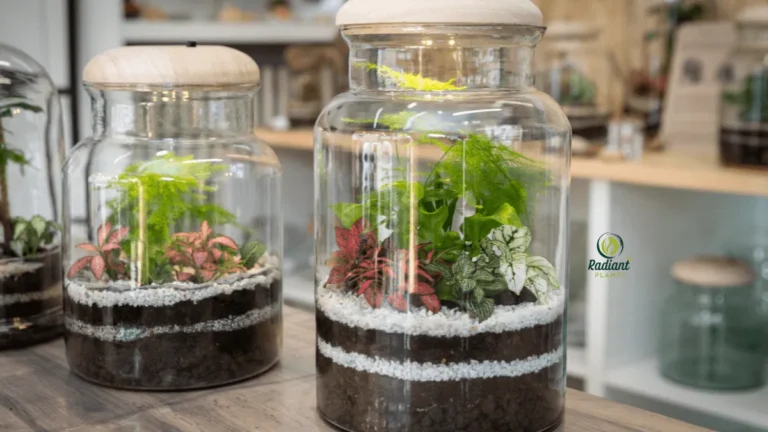
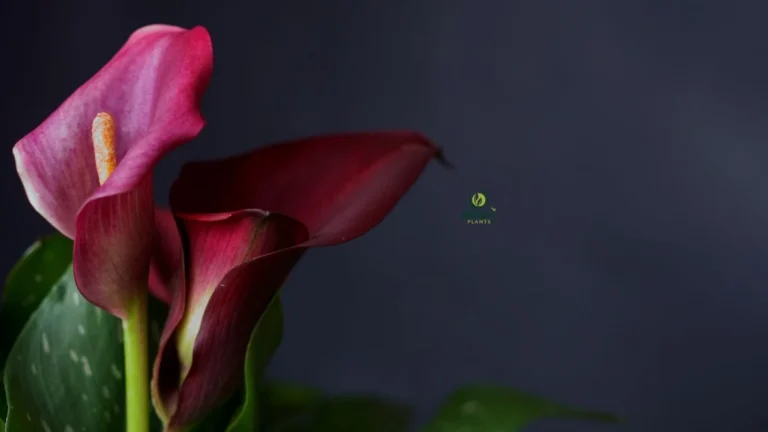
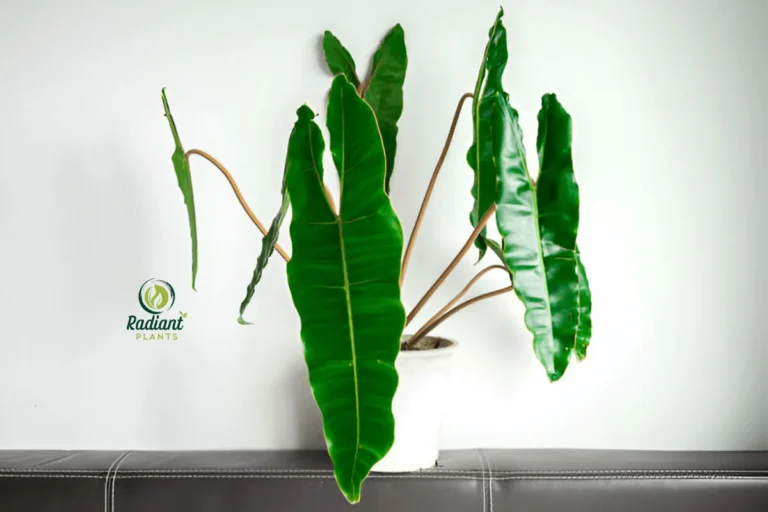
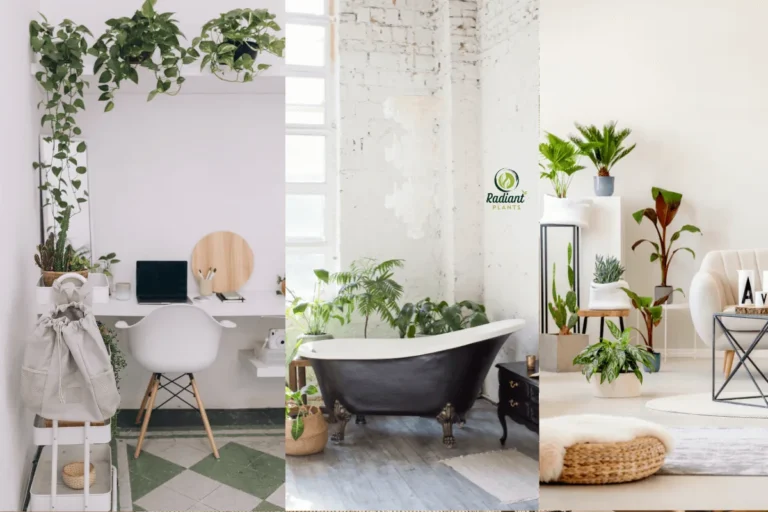
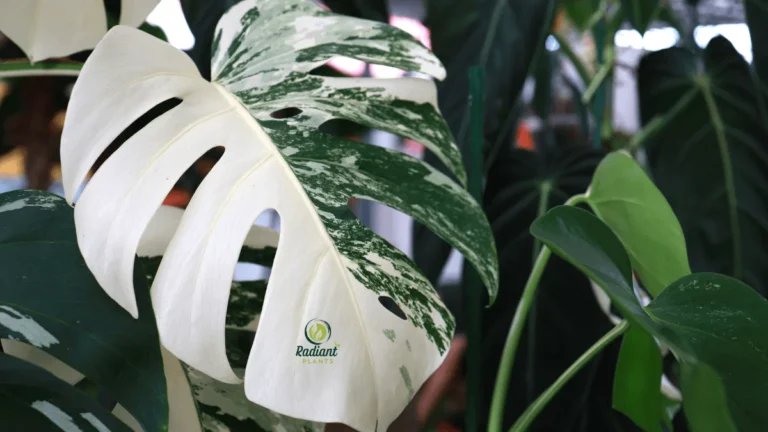

One Comment